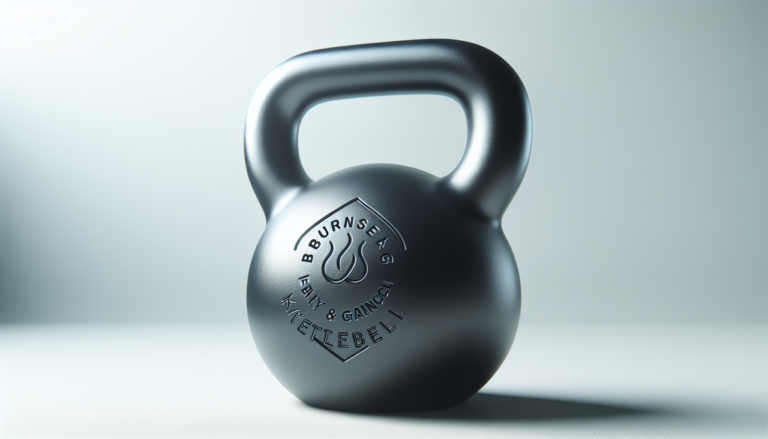Burn Belly Fat For Women
Are you tired of feeling self-conscious about your belly fat? Well, you’ve come to the right place! In this article, we will explore effective strategies to help women burn belly fat and achieve their fitness goals. Whether you want to rock that summer bikini or simply improve your overall health, these tips and tricks will guide you on your journey to a flatter tummy. Say goodbye to stubborn belly fat and hello to a healthier, confident you!
Understanding Belly Fat
Belly fat, also known as abdominal fat or visceral fat, refers to the excess fat that accumulates around the abdominal area. It is not just a matter of appearance; belly fat can also have serious health implications. Understanding the different types of belly fat and why it is a concern for women is essential in effectively addressing and reducing it.
What is belly fat?
Belly fat is categorized into two types: subcutaneous fat and visceral fat. Subcutaneous fat is the fat that lies just beneath the skin and is relatively harmless. Visceral fat, on the other hand, surrounds the organs in the abdominal cavity and poses a greater risk to health. Excess visceral fat has been linked to an increased risk of heart disease, diabetes, and a range of other health conditions.
Types of belly fat
The distribution of belly fat can vary among individuals. While some may primarily have subcutaneous fat, others may have a higher proportion of visceral fat. The “apple-shaped” body type, where fat accumulates in the abdomen, is commonly seen in women and is associated with a higher risk of health problems compared to the “pear-shaped” body type, where fat accumulates in the hips and thighs.
Why is belly fat a concern for women?
Belly fat is of particular concern for women due to the hormonal changes they experience throughout their lives. Estrogen, the primary female sex hormone, plays a role in fat distribution. As women approach menopause, estrogen levels decrease, and fat distribution tends to shift towards the abdominal area. This increase in belly fat can not only be a cosmetic concern but also increase the risk of developing chronic diseases such as cardiovascular disease and type 2 diabetes.
Factors that contribute to belly fat
Various factors contribute to the accumulation of belly fat. These include genetics, hormonal imbalances, unhealthy diet, lack of physical activity, stress, inadequate sleep, and other lifestyle factors. It is important to identify these factors and address them in order to effectively reduce belly fat and improve overall health.
Dietary Factors for Burning Belly Fat
A balanced diet is essential for burning belly fat and achieving overall weight loss. Proper nutrition provides the necessary fuel for the body and helps regulate metabolism.
Importance of a balanced diet
A balanced diet ensures that you are getting all the essential nutrients your body needs. This includes a combination of lean proteins, healthy fats, complex carbohydrates, and plenty of fruits and vegetables. It is important to avoid crash dieting or severely restricting calories, as this can lead to muscle loss and a decrease in metabolism.
Recommended calorie intake
To effectively burn belly fat, it is important to consume the right amount of calories for your body’s needs. Consult with a dietitian or healthcare professional to determine your recommended daily calorie intake based on factors such as age, activity level, and weight loss goals.
Foods to avoid for reducing belly fat
Certain foods can contribute to belly fat and should be limited or avoided. These include refined carbohydrates, sugary foods and beverages, processed foods, and foods high in saturated fats. Instead, focus on whole foods that are nutrient-dense and promote satiety.
Foods to include in your diet
Incorporating specific foods into your diet can help promote belly fat loss. Some examples include fiber-rich foods like fruits, vegetables, and whole grains, lean proteins such as chicken, fish, and tofu, and healthy fats from sources like nuts, seeds, and avocados. Additionally, drinking plenty of water and reducing sugary beverage intake can support overall weight loss efforts.

Exercise and Physical Activity
Regular exercise and physical activity are crucial for burning belly fat and maintaining a healthy weight. There are various types of exercises that target the abdominal area and contribute to overall fat loss.
Types of exercises for burning belly fat
A combination of cardiovascular exercises, strength training exercises, and abdominal exercises is ideal for burning belly fat effectively.
Cardiovascular exercises
Cardiovascular exercises, such as jogging, swimming, cycling, or dancing, increase heart rate and burn calories. Engaging in aerobic activities for at least 150 minutes per week can contribute to overall weight loss and reduce belly fat.
Strength training exercises
Strength training exercises, such as weightlifting or bodyweight exercises, help build lean muscle mass. Muscle burns more calories than fat, even at rest, so incorporating strength training into your exercise routine can help increase metabolism and promote belly fat loss.
Abdominal exercises
Targeted abdominal exercises, such as crunches, planks, or Russian twists, can help tone the abdominal muscles and strengthen the core. While these exercises may not specifically burn belly fat, they can contribute to a tighter and more defined midsection.
Importance of consistency and frequency
Consistency and frequency are key when it comes to exercise. Aim for at least 150 minutes of moderate-intensity aerobic activity per week, along with two or more days of strength training exercises. Remember to gradually increase the intensity and duration of your workouts to continue challenging your body.
Lifestyle Changes and Habits
In addition to diet and exercise, certain lifestyle changes and habits can support belly fat reduction and overall well-being.
Getting enough sleep
Adequate sleep is crucial for hormone regulation and overall health. Lack of sleep can disrupt hormone balance, increase appetite, and potentially contribute to weight gain and belly fat accumulation. Aim for 7-9 hours of quality sleep per night to support your weight loss efforts.
Stress management techniques
Chronic stress can lead to overeating and weight gain, including the accumulation of belly fat. Adopting stress management techniques such as meditation, yoga, deep breathing exercises, or engaging in hobbies can help reduce stress levels and promote a healthier mindset.
Reducing alcohol consumption
Alcohol contains empty calories and can contribute to weight gain, particularly around the abdominal area. Limiting alcohol consumption or opting for healthier alternatives can help reduce calorie intake and support belly fat reduction.
Hydrating properly
Proper hydration is essential for overall health and weight management. Drinking an adequate amount of water throughout the day can help curb appetite, support digestion, and optimize bodily functions. Aim to drink at least 8 cups (64 ounces) of water per day.
Avoiding smoking and secondhand smoke
Smoking and exposure to secondhand smoke have been linked to increased belly fat and a range of other health problems. Quitting smoking or avoiding exposure to secondhand smoke is important for overall health and reducing the risks associated with belly fat.

Hormonal Factors and Belly Fat
Hormones play a significant role in belly fat accumulation, particularly in women. Understanding the effects of hormones and managing hormonal imbalances is crucial for addressing belly fat.
Effects of hormones on belly fat
Hormones such as estrogen, cortisol, and insulin influence fat distribution in the body. Fluctuations in these hormones can lead to an increase in belly fat. For example, high levels of cortisol, which is released in response to stress, have been associated with increased visceral fat.
Menopause and belly fat
During menopause, estrogen levels decline, leading to an increase in abdominal fat. This shift in fat distribution can be challenging for women as they age. However, adopting a healthy lifestyle, including regular exercise and a balanced diet, can help mitigate the impact of hormonal changes on belly fat accumulation.
Ways to balance hormones
Maintaining a healthy weight, reducing stress levels, getting regular exercise, and adopting a balanced diet can support hormonal balance and reduce belly fat. Consulting with a healthcare professional or seeking guidance from a hormone specialist may also be beneficial for managing hormonal imbalances.
Seeking medical advice for hormonal issues
If you suspect a hormonal imbalance is contributing to your belly fat, it is important to consult with a healthcare professional. They can conduct tests to assess hormone levels and develop a personalized treatment plan to address any underlying hormonal issues.
Supplements and Natural Remedies
While there are various supplements and natural remedies marketed for belly fat reduction, it is important to approach them with caution and consult with a healthcare professional before starting any new regimen.
Understanding the effectiveness of supplements
Supplements marketed for belly fat reduction often lack scientific evidence supporting their claims. Some supplements may have potential benefits, such as green tea extract or conjugated linoleic acid (CLA), but their effectiveness and safety can vary. It is important to research and verify the credibility of any supplement before incorporating it into your routine.
Common natural remedies for belly fat
Certain natural remedies, such as herbal teas, apple cider vinegar, or consuming foods rich in certain compounds like capsaicin (found in chili peppers), have been suggested to aid in belly fat reduction. While these remedies may have some anecdotal evidence, their effectiveness may vary among individuals. It is important to approach natural remedies with realistic expectations and consult with a healthcare professional before use.
Consulting with a healthcare professional before taking supplements
Before starting any new supplement regimen, it is important to consult with a healthcare professional. They can assess your individual needs, evaluate potential interactions with medications or existing conditions, and provide expert guidance on how to incorporate supplements safely and effectively.
Mindset and Mental Health
The connection between mindset, mental health, and belly fat cannot be overlooked. Adopting a positive mindset and addressing emotional eating can significantly contribute to weight loss and overall well-being.
The connection between mental health and belly fat
Mental health can play a role in weight management, including belly fat accumulation. Stress, depression, anxiety, and other mental health conditions can contribute to emotional eating, which often involves consuming high-calorie, unhealthy foods. These eating behaviors can lead to weight gain and hinder belly fat reduction efforts.
Positive mindset and weight loss
Maintaining a positive mindset throughout your weight loss journey can be key to long-term success. Celebrate your progress, set realistic goals, and focus on making sustainable lifestyle changes rather than chasing quick fixes or obsessing over the number on the scale. Remember that small, consistent steps towards a healthier lifestyle are more important than perfection.
Managing emotional eating
Addressing emotional eating is important for effective belly fat reduction. Find alternative coping mechanisms for stress or emotional triggers, such as engaging in a hobby, taking a walk, or seeking support from friends, family, or a mental health professional. Mindful eating techniques, such as paying attention to hunger cues and eating with awareness, can also help foster a healthier relationship with food.
Seeking support or therapy if needed
If emotional eating or mental health concerns are hindering your weight loss efforts, consider seeking support from a therapist or joining a support group. Professional guidance can provide valuable tools and strategies for managing emotions, developing healthy coping mechanisms, and ultimately supporting your belly fat reduction goals.
Tracking Progress and Staying Motivated
Tracking your progress and staying motivated can be crucial for long-term success when it comes to belly fat reduction.
Setting realistic goals
When setting goals for belly fat reduction, it is important to be realistic and focus on sustainable changes. Aim for gradual, steady progress rather than rapid weight loss, as this is more likely to lead to long-term success. Set achievable goals that are specific, measurable, attainable, relevant, and time-bound (SMART goals).
Measuring progress
Tracking your progress can provide motivation and insights into what is working for you. Consider measuring changes in waist circumference, taking progress photos, or monitoring changes in body composition rather than solely relying on the number on the scale. Remember that weight loss is not always linear, and small changes over time can add up to significant results.
Keeping a food and exercise diary
Keeping a food and exercise diary can help increase awareness of your eating habits and activity levels. This can help identify patterns, highlight areas for improvement, and serve as a tool for accountability. Be honest and record everything you consume, including portion sizes and your emotions surrounding eating.
Maintaining motivation and accountability
Finding ways to stay motivated and accountable can greatly increase your chances of success. Consider sharing your goals with a friend or joining a fitness group for added support and encouragement. Rewarding yourself for reaching milestones can also provide an extra boost of motivation. Remember that your journey is unique, and progress should be celebrated regardless of the pace.
Medical Interventions for Belly Fat
In some cases, medical interventions may be considered for belly fat reduction. It is important to understand when these options are appropriate and the potential risks and considerations involved.
When to consider medical interventions
Medical interventions for belly fat reduction, such as liposuction or other surgical options, are typically considered when diet, exercise, and lifestyle changes have not yielded desired results. It is important to have a thorough discussion with a healthcare professional to determine if these interventions are suitable for your specific situation.
Liposuction and other surgical options
Liposuction is a surgical procedure in which excess fat is removed from specific areas of the body, including the abdomen. It can be an effective option for targeted fat reduction, but it is important to remember that it is not a substitute for a healthy lifestyle. Other surgical options, such as tummy tucks or body contouring procedures, may also be considered depending on individual circumstances.
Non-invasive treatments to reduce belly fat
Non-invasive treatments, such as laser therapy, ultrasound, or radiofrequency devices, are alternative options for reducing belly fat. These treatments work by targeting and breaking down fat cells, promoting their elimination from the body. While these procedures may offer some benefits, it is important to consult with a qualified professional to assess their suitability and understand potential risks.
Risks and considerations
Medical interventions for belly fat reduction, whether surgical or non-invasive, come with potential risks and considerations. It is essential to have realistic expectations, understand the recovery process, and be aware of potential complications associated with these procedures. Consulting with a qualified healthcare professional or surgeon can provide valuable information and help make an informed decision regarding medical interventions.
Maintaining Long-term Success
Achieving belly fat reduction is just the first step; maintaining long-term success requires creating a sustainable lifestyle and adopting healthy habits.
Creating a sustainable lifestyle
Rather than viewing belly fat reduction as a temporary goal, focus on creating a sustainable lifestyle that supports your overall health and well-being. Continue to prioritize a balanced diet, regular exercise, adequate sleep, stress management, and other healthy habits that contribute to maintaining a healthy weight.
Avoiding weight cycling
Weight cycling, often referred to as yo-yo dieting, can be detrimental to your overall health and make it more difficult to reduce belly fat. Instead of resorting to extreme dieting or quick fixes, embrace a balanced approach that includes nourishing your body with wholesome foods, staying active, and practicing self-care consistently.
Adapting exercise routines
As your body adjusts and adapts to your exercise routine, it is important to continue challenging yourself and making adjustments. Incorporate different exercises, increase intensity, or try new activities to keep your workouts engaging and continue burning belly fat effectively.
Continuing healthy eating habits
Healthy eating habits should not end once you have achieved your belly fat reduction goals. Continue to prioritize nutrient-dense, whole foods, and avoid reverting to old habits. Remember that a balanced diet is a lifelong commitment that supports not only belly fat reduction but also overall health and vitality.
In conclusion, addressing belly fat for women requires a comprehensive approach that includes dietary factors, exercise, lifestyle changes, hormonal considerations, mindset and mental health, tracking progress, potential medical interventions, and maintaining long-term success. By implementing these strategies and seeking support when needed, women can successfully reduce belly fat and improve overall health and well-being. Remember, your journey is unique, and each step you take towards a healthier lifestyle is a step in the right direction.






